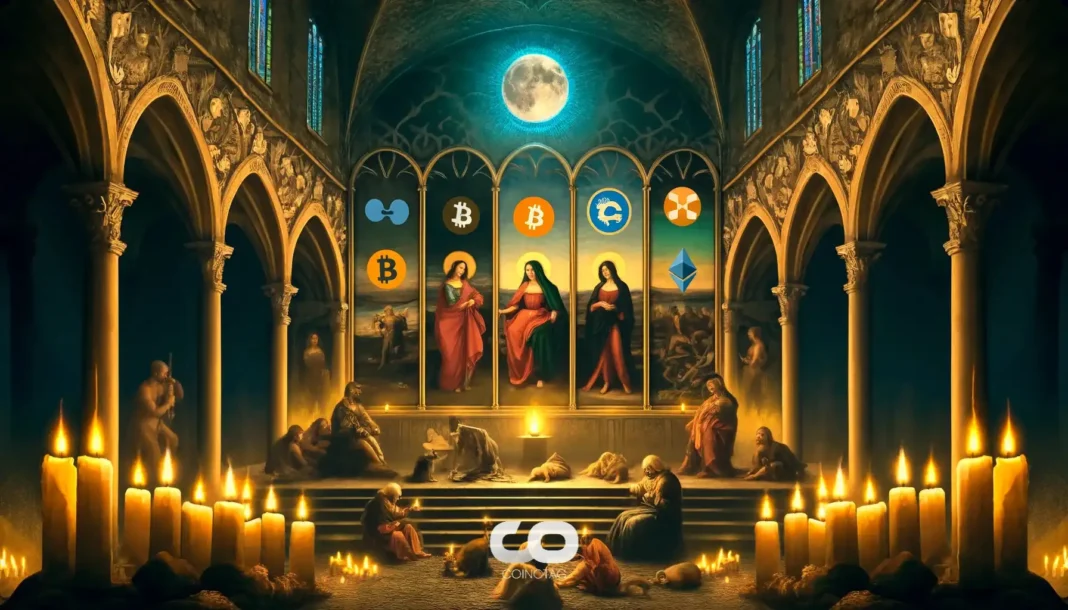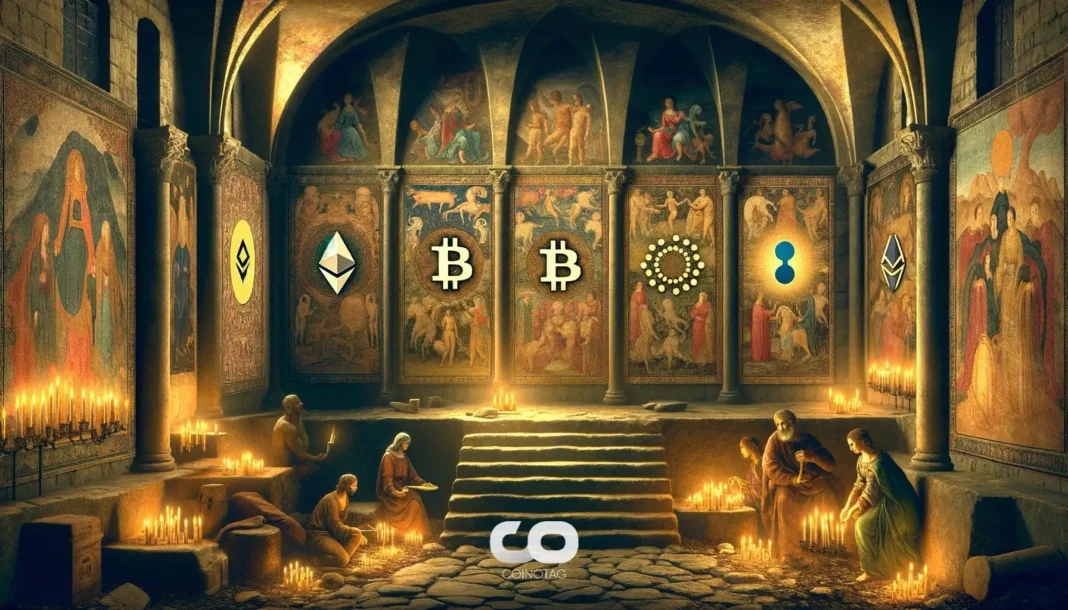| COINOTAG recommends • Exchange signup |
| 💹 Trade with pro tools |
| Fast execution, robust charts, clean risk controls. |
| 👉 Open account → |
| COINOTAG recommends • Exchange signup |
| 🚀 Smooth orders, clear control |
| Advanced order types and market depth in one view. |
| 👉 Create account → |
| COINOTAG recommends • Exchange signup |
| 📈 Clarity in volatile markets |
| Plan entries & exits, manage positions with discipline. |
| 👉 Sign up → |
| COINOTAG recommends • Exchange signup |
| ⚡ Speed, depth, reliability |
| Execute confidently when timing matters. |
| 👉 Open account → |
| COINOTAG recommends • Exchange signup |
| 🧭 A focused workflow for traders |
| Alerts, watchlists, and a repeatable process. |
| 👉 Get started → |
| COINOTAG recommends • Exchange signup |
| ✅ Data‑driven decisions |
| Focus on process—not noise. |
| 👉 Sign up → |
- Vitalik Buterin, the visionary behind Ethereum, shares innovative methods to slash transaction confirmation times on the Ethereum network.
- He argues for sub-second latency for smoother performance across diverse applications.
- Buterin mentions that current transaction times can still be improved despite recent strides.
Discover how Ethereum plans to speed up transaction times and stay ahead of the competition with pioneering strategies.
Innovations to Decrease Transaction Confirmation Time
In a comprehensive blog post dated June 30, Buterin outlined Ethereum’s development, noting that the current transaction confirmation time hovers between 5-20 seconds, akin to traditional credit card transactions. Nevertheless, Buterin envisions further enhancements through new techniques.
One such technique, known as Single-Slot Finality (SSF), aims to simplify the intricate slot and epoch system presently in use. By finalizing each block before proposing the next, SSF could significantly cut down confirmation times. However, this method might introduce additional strain on the blockchain due to the constant communication required from validators.
Another strategy involves Rollup Preconfirmations, where Layer 2 protocols take charge of transaction confirmations. Protocols like Optimism, Arbitrum, and Base utilize Ethereum’s security while managing transactions at higher speeds. This allows the main Ethereum network to maintain its core functions of stability and censorship resistance while delegating faster processing to these Layer 2 solutions.
| COINOTAG recommends • Professional traders group |
| 💎 Join a professional trading community |
| Work with senior traders, research‑backed setups, and risk‑first frameworks. |
| 👉 Join the group → |
| COINOTAG recommends • Professional traders group |
| 📊 Transparent performance, real process |
| Spot strategies with documented months of triple‑digit runs during strong trends; futures plans use defined R:R and sizing. |
| 👉 Get access → |
| COINOTAG recommends • Professional traders group |
| 🧭 Research → Plan → Execute |
| Daily levels, watchlists, and post‑trade reviews to build consistency. |
| 👉 Join now → |
| COINOTAG recommends • Professional traders group |
| 🛡️ Risk comes first |
| Sizing methods, invalidation rules, and R‑multiples baked into every plan. |
| 👉 Start today → |
| COINOTAG recommends • Professional traders group |
| 🧠 Learn the “why” behind each trade |
| Live breakdowns, playbooks, and framework‑first education. |
| 👉 Join the group → |
| COINOTAG recommends • Professional traders group |
| 🚀 Insider • APEX • INNER CIRCLE |
| Choose the depth you need—tools, coaching, and member rooms. |
| 👉 Explore tiers → |
Buterin also suggested that users could pay extra fees for expedited transaction guarantees. This approach ensures transactions are included in the next block, enhancing security and dependability, particularly beneficial for Layer 2 implementations.
Ethereum in the Competitive Crypto Landscape
Ethereum’s 12-second block time is already faster than Bitcoin’s 10-minute block time. However, it still lags behind faster networks like Solana, which boasts block times of just 0.4 seconds despite criticisms regarding its complexity.
| COINOTAG recommends • Exchange signup |
| 📈 Clear interface, precise orders |
| Sharp entries & exits with actionable alerts. |
| 👉 Create free account → |
| COINOTAG recommends • Exchange signup |
| 🧠 Smarter tools. Better decisions. |
| Depth analytics and risk features in one view. |
| 👉 Sign up → |
| COINOTAG recommends • Exchange signup |
| 🎯 Take control of entries & exits |
| Set alerts, define stops, execute consistently. |
| 👉 Open account → |
| COINOTAG recommends • Exchange signup |
| 🛠️ From idea to execution |
| Turn setups into plans with practical order types. |
| 👉 Join now → |
| COINOTAG recommends • Exchange signup |
| 📋 Trade your plan |
| Watchlists and routing that support focus. |
| 👉 Get started → |
| COINOTAG recommends • Exchange signup |
| 📊 Precision without the noise |
| Data‑first workflows for active traders. |
| 👉 Sign up → |
While a 12-second block time suffices for some applications, others demand the faster performance that advanced architectures like SSF can provide.
Buterin foresees a future where both SSF and Rollup Preconfirmations coexist. Methods like Orbit SSF might reduce the number of validators required per slot, potentially extending slot times to 16 seconds but maintaining the goal of reducing the 32 ETH staking minimum. This dual approach would offer more options for both Layer 1 and Layer 2 users, simplify developer tasks, and generally improve the network’s overall performance in the long run.
| COINOTAG recommends • Traders club |
| ⚡ Futures with discipline |
| Defined R:R, pre‑set invalidation, execution checklists. |
| 👉 Join the club → |
| COINOTAG recommends • Traders club |
| 🎯 Spot strategies that compound |
| Momentum & accumulation frameworks managed with clear risk. |
| 👉 Get access → |
| COINOTAG recommends • Traders club |
| 🏛️ APEX tier for serious traders |
| Deep dives, analyst Q&A, and accountability sprints. |
| 👉 Explore APEX → |
| COINOTAG recommends • Traders club |
| 📈 Real‑time market structure |
| Key levels, liquidity zones, and actionable context. |
| 👉 Join now → |
| COINOTAG recommends • Traders club |
| 🔔 Smart alerts, not noise |
| Context‑rich notifications tied to plans and risk—never hype. |
| 👉 Get access → |
| COINOTAG recommends • Traders club |
| 🤝 Peer review & coaching |
| Hands‑on feedback that sharpens execution and risk control. |
| 👉 Join the club → |
Conclusion
Vitalik Buterin’s proposed strategies for reducing transaction times are set to make Ethereum more competitive in the cryptocurrency arena. By employing Single-Slot Finality and Rollup Preconfirmations together, Ethereum aims to achieve faster, more efficient transactions while distributing the workload between its main and Layer 2 networks. These moves will likely enhance user experience and maintain Ethereum’s dominant position in blockchain technology.
| COINOTAG recommends • Members‑only research |
| 📌 Curated setups, clearly explained |
| Entry, invalidation, targets, and R:R defined before execution. |
| 👉 Get access → |
| COINOTAG recommends • Members‑only research |
| 🧠 Data‑led decision making |
| Technical + flow + context synthesized into actionable plans. |
| 👉 Join now → |
| COINOTAG recommends • Members‑only research |
| 🧱 Consistency over hype |
| Repeatable rules, realistic expectations, and a calmer mindset. |
| 👉 Get access → |
| COINOTAG recommends • Members‑only research |
| 🕒 Patience is an edge |
| Wait for confirmation and manage risk with checklists. |
| 👉 Join now → |
| COINOTAG recommends • Members‑only research |
| 💼 Professional mentorship |
| Guidance from seasoned traders and structured feedback loops. |
| 👉 Get access → |
| COINOTAG recommends • Members‑only research |
| 🧮 Track • Review • Improve |
| Documented PnL tracking and post‑mortems to accelerate learning. |
| 👉 Join now → |







